Can Allergic Reactions Look Like Bug Bites: Insect Sting Allergies | Symptoms & Treatment
What are the symptoms and treatment for insect sting allergies. How to diagnose and manage insect sting allergies. Tips to avoid insect stings.
Diagnosing Insect Sting Allergies
If you are concerned that you may have an allergy to insect venom, your best option is to see an allergist. Your allergist should take a detailed medical history, including questions about previous stings (how many there have been and where you were stung), your reaction to those stings (what you experienced, how long the reaction lasted and what you did to get relief) and any additional symptoms.
Your allergist may perform one or more tests to diagnose allergy to insect venom, such as a skin-prick test, an intradermal skin test or a blood test. In the skin-prick test, a small amount of a liquid containing insect venom is placed on the back or forearm, which is then pricked with a small, sterile probe to allow the liquid to seep into the skin. If a raised, reddish spot forms within 15 to 20 minutes, that can indicate an allergy. In the blood test, a blood sample is sent to a laboratory to test for the presence of immunoglobulin E (IgE) antibodies to insect venom.

If the skin prick test is negative or inconclusive your allergist will likely recommend an intradermal skin test, in which a small amount of venom extract is injected just under the skin. The site is examined after about 15 minutes for signs of an allergic reaction. This test is considered more accurate than the skin-prick or blood tests in determining the presence of IgE antibodies. If both skin prick and intradermal skin tests are negative then your allergist may recommend a blood test.
The strength of a reaction to a skin or blood test does not indicate how severe your allergic reaction will be the next time you are stung.
Managing Insect Sting Allergies
Insect sting allergy is treated in a two-step approach:
- The first step is the emergency treatment of the symptoms of a serious reaction when they occur.
- The second step is preventive treatment of the underlying allergy with venom immunotherapy.
Life-threatening allergic reactions can progress very rapidly and require immediate medical attention. Emergency treatment usually includes administration of certain drugs, such as epinephrine, antihistamines, and in some cases, corticosteroids, intravenous fluids, oxygen and other treatments. Once stabilized, these patients sometimes require close observation in the hospital overnight.
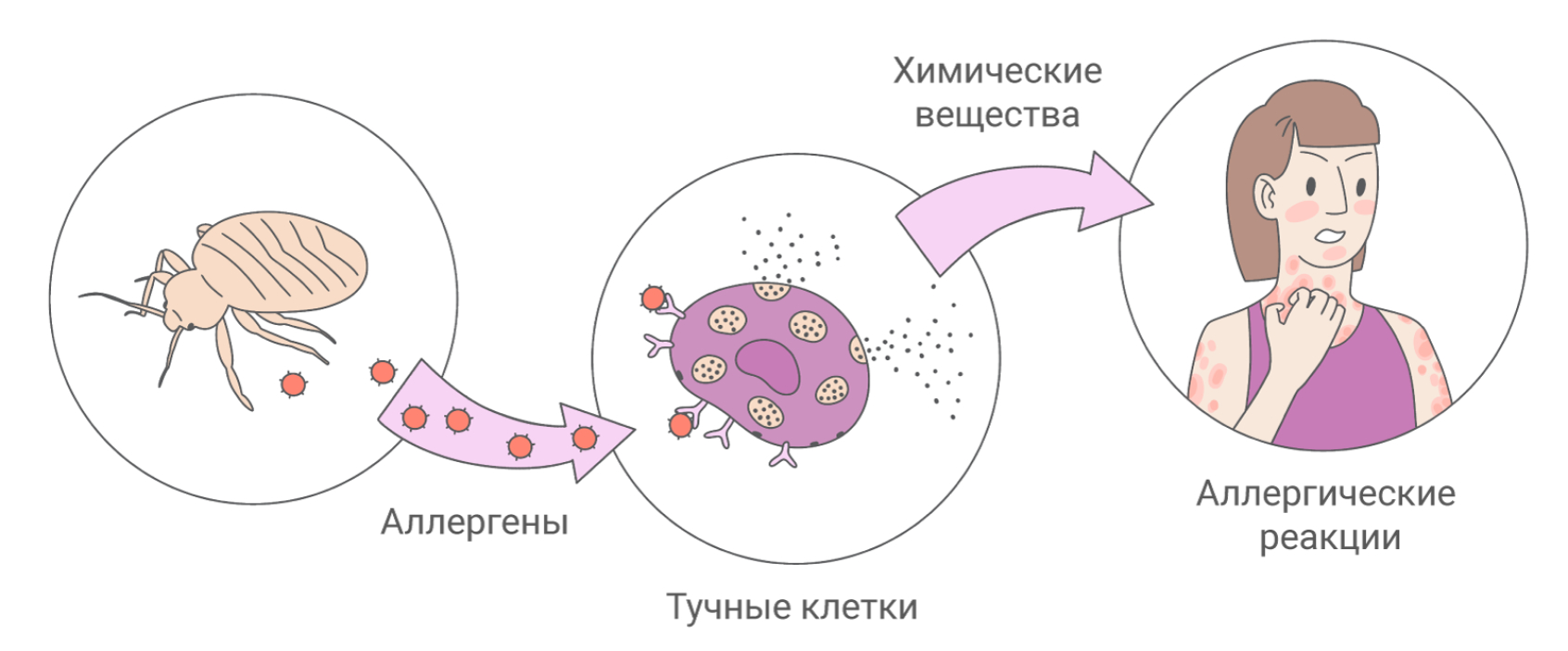
Injectable epinephrine for self-administration is often prescribed as emergency rescue medication for treating an allergic reaction. People who have had previous allergic reactions and rely on epinephrine must remember to carry it with them at all times. Also, because one dose may not be enough to reverse the reaction, recent guidelines recommend keeping two doses of injectable epinephrine available and to activate emergency medical services if used. Even if symptoms improve after a single dose of epinephrine, immediate medical attention following an insect sting is recommended.
Venom Immunotherapy for Insect Sting Allergies
The long-term treatment of insect sting allergy is called venom immunotherapy, a highly effective program administered by an allergist, which can prevent future allergic reactions to insect stings.
Venom immunotherapy involves administering gradually increasing doses of venom to decrease a patient’s sensitivity to the venom. This can reduce the risk of a future allergic reaction to that of the general population. In a matter of weeks to months, people who previously lived under the constant threat of severe reactions to insect stings can return to leading normal lives.
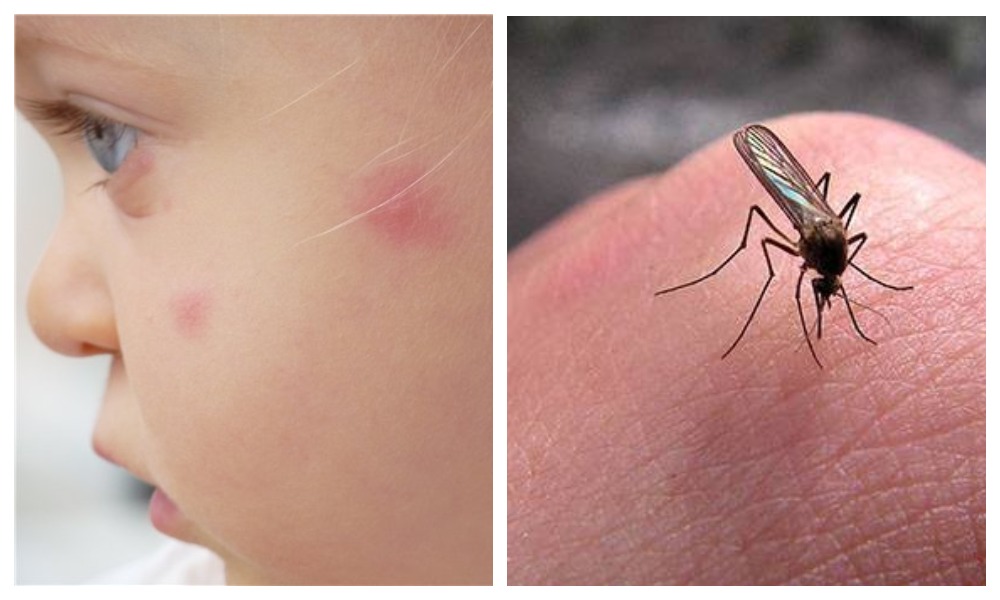
If you think you might be allergic to insect stings, talk to your allergist. Based on your past history and certain tests, the allergist will determine if you are a candidate for skin testing and immunotherapy.
Avoiding Insect Stings
Knowing how to avoid stings from fire ants, bees, wasps, hornets and other stinging insects is important for people with insect sting allergies. Some tips include:
- Avoid wearing bright colors, floral prints, and loose-fitting garments when outdoors
- Avoid using scented personal care products, which can attract insects
- Be cautious around flowering plants, garbage cans, and other areas where stinging insects may be present
- Remain calm and avoid swatting at insects if they land on you
- Seek shade and cover up as much skin as possible when outdoors
- Avoid wearing sandals or going barefoot, especially in grassy areas
- Check for nests or hives in and around your home and have them removed by a professional
Symptoms of Insect Sting Allergies
The symptoms of an insect sting allergy can range from mild, localized reactions to life-threatening anaphylaxis. Mild reactions may include:

- Redness, swelling, and itching at the sting site
- Hives or rash
- Nausea or vomiting
More severe reactions, known as anaphylaxis, can include:
- Difficulty breathing
- Swelling of the face, throat, or tongue
- Rapid heartbeat
- Dizziness or fainting
- Nausea, vomiting, or diarrhea
Anaphylaxis is a medical emergency and requires immediate treatment with epinephrine and a trip to the emergency room.
Insect Sting Allergy vs. Bug Bites
While insect sting allergies and bug bites can both cause skin redness, swelling, and itching, there are some key differences:
- Insect sting allergies are caused by the venom injected by stinging insects, while bug bites are caused by the saliva of biting insects
- Insect sting allergies can cause more severe, systemic reactions like anaphylaxis, while bug bites are usually localized to the bite site
- Insect sting allergies require medical treatment and possibly immunotherapy, while bug bites can usually be treated with over-the-counter remedies
If you experience an allergic reaction after an insect sting, it’s important to see an allergist to determine if you have a true insect sting allergy and get appropriate treatment.

When to Seek Medical Attention
Any signs of a severe allergic reaction, such as difficulty breathing, swelling of the face or throat, or rapid heartbeat, require immediate medical attention. Call 911 or your local emergency number right away.
Even if symptoms seem to improve after using epinephrine, you should still go to the emergency room. The reaction could return or get worse, and you may need further treatment.
For milder reactions, contact your allergist or healthcare provider. They can help determine if you need any additional treatment or follow-up care.
Insect Sting Allergies | Symptoms & Treatment
Diagnosing
If you are concerned that you may have an </span>” rel=”tooltip”>allergy to insect venom, your best option is to see an allergist.
Your allergist should take a detailed medical history, including questions about previous stings (how many there have been and where you were stung), your reaction to those stings (what you experienced, how long the reaction lasted and what you did to get relief) and any additional symptoms.
Your allergist may perform one or more tests to diagnose allergy to insect venom, such as a skin-prick test, an intradermal skin test or a blood test.
In the skin-prick test, a small amount of a liquid containing insect venom is placed on the back or forearm, which is then pricked with a small, sterile probe to allow the liquid to seep into the skin. If a raised, reddish spot forms within 15 to 20 minutes, that can indicate an allergy. In the blood test, a blood sample is sent to a laboratory to test for the presence of immunoglobulin E (IgE) antibodies to insect venom.
If the skin prick test is negative or inconclusive your allergist will likely recommend an intradermal skin test, in which a small amount of venom extract is injected just under the skin. The site is examined after about 15 minutes for signs of an allergic reaction. This test is considered more accurate than the skin-prick or blood tests in determining the presence of IgE antibodies. If both skin prick and intradermal skin tests are negative then your allergist may recommend a blood test.
The site is examined after about 15 minutes for signs of an allergic reaction. This test is considered more accurate than the skin-prick or blood tests in determining the presence of IgE antibodies. If both skin prick and intradermal skin tests are negative then your allergist may recommend a blood test.
The strength of a reaction to a skin or blood test does not indicate how severe your allergic reaction will be the next time you are stung.
Management and Treatment
Insect sting allergy is treated in a two-step approach:
- The first step is the emergency treatment of the symptoms of a serious reaction when they occur.
- The second step is preventive treatment of the underlying allergy with venom immunotherapy.
Life-threatening allergic reactions can progress very rapidly and require immediate medical attention. Emergency treatment usually includes administration of certain drugs, such as epinephrine, antihistamines, and in some cases, corticosteroids, intravenous fluids, oxygen and other treatments. Once stabilized, these patients sometimes require close observation in the hospital overnight.
Once stabilized, these patients sometimes require close observation in the hospital overnight.
Injectable epinephrine for self-administration is often prescribed as emergency rescue medication for treating an allergic reaction. People who have had previous allergic reactions and rely on epinephrine must remember to carry it with them at all times. Also, because one dose may not be enough to reverse the reaction, recent guidelines recommend keeping two doses of injectable epinephrine available and to activate emergency medical services if used. Even if symptoms improve after a single dose of epinephrine, immediate medical attention following an insect sting is recommended.
Venom Immunotherapy
The long-term treatment of insect sting allergy is called venom immunotherapy, a highly effective program administered by an allergist, which can prevent future allergic reactions to insect stings.
Venom immunotherapy involves administering gradually increasing doses of venom to decrease a patient’s sensitivity to the venom.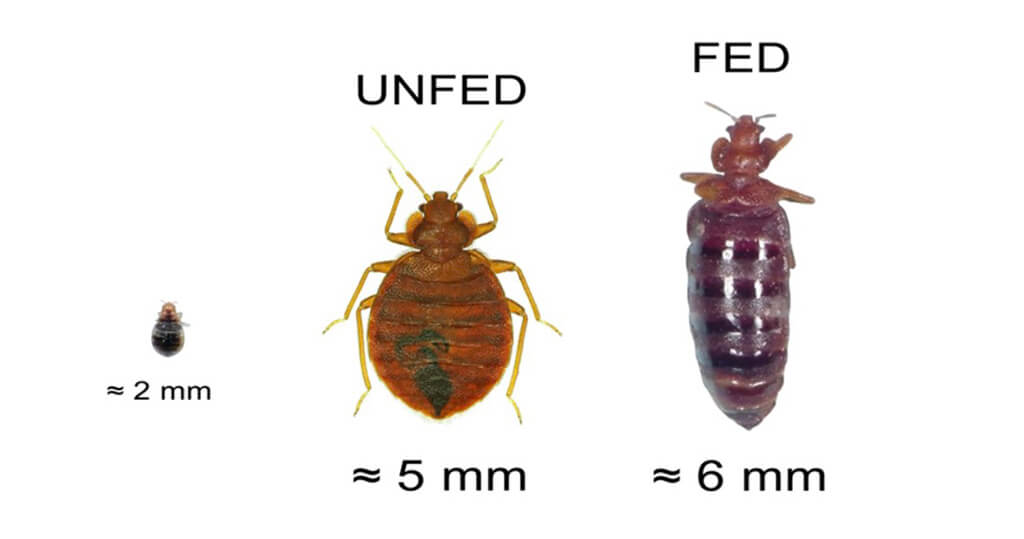 This can reduce the risk of a future allergic reaction to that of the general population. In a matter of weeks to months, people who previously lived under the constant threat of severe reactions to insect stings can return to leading normal lives.
This can reduce the risk of a future allergic reaction to that of the general population. In a matter of weeks to months, people who previously lived under the constant threat of severe reactions to insect stings can return to leading normal lives.
If you think you might be allergic to insect stings, talk to your allergist. Based on your past history and certain tests, the allergist will determine if you are a candidate for skin testing and immunotherapy.
Avoiding Insect Stings
Knowing how to avoid stings from fire ants, honeybees, wasps, hornets and yellow jackets leads to a more enjoyable summer for everyone. Stinging insects are most active during the late spring, summer, summer and early fall. Insect repellents do not work against stinging insects.
Yellow jackets will nest in the ground and in walls. Hornets and wasps will nest in bushes, trees and on buildings. Use extreme caution when working or playing in these areas. Avoid open garbage cans and exposed food at picnics, which attract yellow jackets.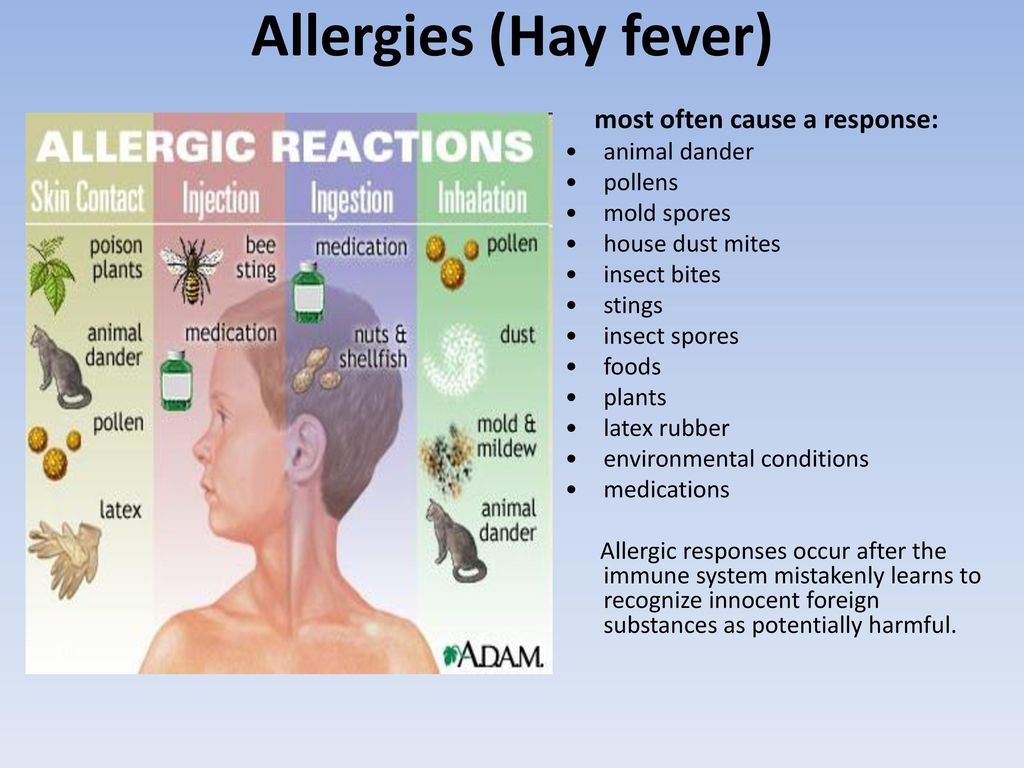 Also, try to reduce the amount of exposed skin when outdoors.
Also, try to reduce the amount of exposed skin when outdoors.
Effective methods for insecticide treatment of fire ant mounds use attractant baits. These baits often contain soybean oil and corn grits combined with chemical agents. The bait is picked up by the worker ants and taken deeper into the mound to the queen. It can take weeks for these insecticides to work.
Allergists recommend the following additional precautions to avoid insect stings:
- Avoid wearing sandals or walking barefoot in the grass. Honeybees and bumblebees forage on white clover, a weed that grows in lawns throughout the country.
- Never swat at a flying insect. If need be, gently brush it aside or patiently wait for it to leave.
- Do not drink from open beverage cans. Stinging insects will crawl inside a can attracted by the sweet beverage.
- When eating outdoors, try to keep food covered at all times.
- Garbage cans stored outside should be covered with tight-fitting lids.

- Avoid sweet-smelling perfumes, hair sprays, colognes and deodorants.
- Avoid wearing bright-colored clothing.
- Yard work and gardening should be done with caution. Wearing shoes and socks and using work gloves will prevent stings on hands and feet and provide time to get away from an unexpected mound.
- Keep window and door screens in good repair. Drive with car windows closed.
- Keep prescribed medications handy at all times and follow the instructions if you are stung. These medications are for immediate emergency use while en route to a hospital emergency room for observation and further treatment.
If you have had an allergic reaction to an insect sting, it’s important that you see an allergist.
Fire Ant Sting
Fire ant sting allergy treatment
Fire ant sting allergy is treated in a two-step approach:
- The first step is the emergency treatment of the symptoms of a serious reaction when they occur.
- The second step is preventive treatment of the underlying allergy with whole body extract immunotherapy.

Life-threatening allergic reactions can progress very rapidly and require immediate medical attention. Emergency treatment usually includes administration of certain drugs, such as epinephrine, antihistamines, and in some cases, corticosteroids, intravenous fluids, oxygen and other treatments. Once stabilized, these patients sometimes require close observation in the hospital overnight.
Injectable epinephrine is often prescribed as emergency rescue medication for treating an allergic reaction. People who have had previous allergic reactions and rely on epinephrine must remember to carry it with them at all times.
Also, because one dose may not be enough to reverse the reaction, recent guidelines recommend keeping two doses of injectable epinephrine available and to activate emergency medical services if used. Even if symptoms improve after a single dose of epinephrine, immediate medical attention following an insect sting is recommended.
What is a normal reaction to a fire ant sting, and how is it treated?
The severity of a fire ant sting reaction varies from person to person. One of the main differences between fire ants and other insects is that a usual sting event consists of multiple fire ants stinging. This is because when a fire ant mound is disturbed hundreds to thousands of fire ants respond. In addition, each ant can sting repeatedly. Each ant will bite and hold on with its mandibles (jaw) and sting several times. If not removed, this results in a little semi-circular pattern of stings. Since fire ants hold on with their mandibles, they often have to be pulled off individually and are not easily brushed off when they are stinging.
One of the main differences between fire ants and other insects is that a usual sting event consists of multiple fire ants stinging. This is because when a fire ant mound is disturbed hundreds to thousands of fire ants respond. In addition, each ant can sting repeatedly. Each ant will bite and hold on with its mandibles (jaw) and sting several times. If not removed, this results in a little semi-circular pattern of stings. Since fire ants hold on with their mandibles, they often have to be pulled off individually and are not easily brushed off when they are stinging.
Almost all people stung by fire ants develop an itchy, localized hive or lump at the sting site, which usually subsides within 30 to 60 minutes. This is followed by a small blister within four hours. This usually appears to become filled with pus-like material by eight to 24 hours. However, what is seen is really dead tissue, and the blister has little chance of being infected unless it is opened. When healed, these lesions may leave scars.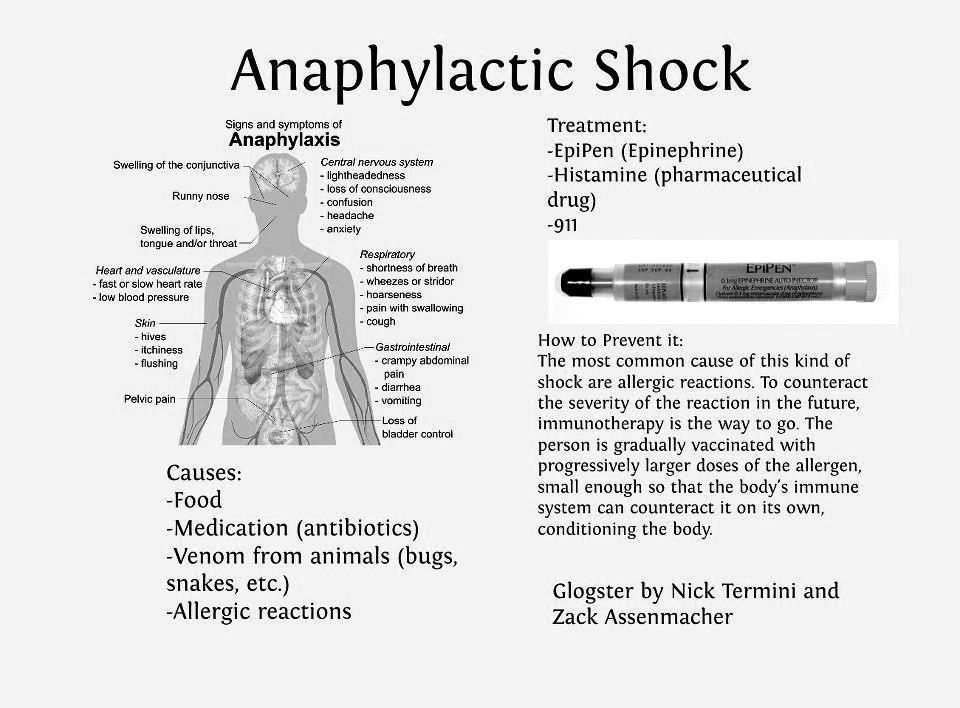
Fire ant sting treatment is aimed at preventing secondary bacterial infection, which may occur if the pustule is scratched or broken. Clean the blisters with soap and water to prevent secondary infection. Do not break the blister. If a blister is accidentally opened, careful attention to keeping the area clean with soap and water should still prevent infection. Topical corticosteroid ointments and oral antihistamines may relieve the itching associated with these reactions.
Pets, Dog and Cat Allergies | Symptoms & Treatment
Overview
A pet "}" data-sheets-userformat="{"2":8963,"3":{"1":0},"4":[null,2,16777215],"11":4,"12":0,"16":10}">Allergies are inappropriate or exaggerated reactions of the immune system to substances that, in the majority of people, cause no symptoms. Symptoms of the allergic diseases may be caused by exposure of the skin to a chemical, of the respiratory system to particles of dust or pollen (or other substances), or of the stomach and intestines to a particular food.</span>” rel=”tooltip”>allergy can contribute to constant allergy symptoms, as exposure can occur at work, school, day care or in other indoor environments, even if a pet is not present.
Pet Allergy Symptoms
- Sneezing
- Runny or stuffy nose
- Facial pain (from nasal congestion)
- Coughing, chest tightness, shortness of breath and wheezing
- Watery, red or itchy eyes
- Skin rash or hives
Pet Allergy Management and Treatment
- Avoid being around dogs and cats; if you have a pet at home, take specific steps to limit exposure.

- Nasal sprays, antihistamines and bronchodilators can help relieve symptoms.
- Consider allergy shots ( Immunotherapy involves giving gradually increasing doses of the substance, or allergen, to which the person is allergic. The incremental increases of the allergen cause the immune system to become less sensitive to the substance, perhaps by causing production of a particular "blocking" antibody, which reduces the symptoms of allergy when the substance is encountered in the future.</span>” rel=”tooltip”>immunotherapy).
Do you want to know if it’s Fluffy or Fido causing you to wheeze and sneeze?
It’s time for an allergist.
Cat Allergies
If your nose runs and your eyes water or you start sneezing and wheezing after petting or playing with a cat, you likely have a cat allergy. A cat allergy can contribute to constant allergy symptoms, as exposure can occur at work, school, day care or in other indoor environments, even if a cat is not present.
Cats produce multiple allergens (proteins that can cause allergy). These allergens are found on the fur and skin and in saliva. All cats produce allergens; studies have not shown that cats can be hypoallergenic (meaning that they don’t cause allergy). Homes with more than one cat have higher levels of cat allergens. Characteristics such as the length of a cat’s hair, its sex and the amount of time a cat spends indoors are not associated with cat allergen levels.
All cats produce allergens; studies have not shown that cats can be hypoallergenic (meaning that they don’t cause allergy). Homes with more than one cat have higher levels of cat allergens. Characteristics such as the length of a cat’s hair, its sex and the amount of time a cat spends indoors are not associated with cat allergen levels.
Dust and pollen in a cat’s coat can also cause allergy symptoms. In those cases, the allergy is to the dust or pollen, not to the cat.
Of all the pollen, and mold, and animal dander, dust mites that we have studied, the cat dander is absolutely the smallest dander. And what that means is that allergen remains airborne for at least 30 minutes after you disturb it in the room. That just allows the allergic patient to have a constant exposure to that allergen.
Allergist Dana Wallace, MD
Cat Allergy Symptoms
Cat allergy symptoms range from mild to severe, depending on an individual’s sensitivity and the level of exposure to allergens. Those variables may also influence how quickly symptoms develop after exposure. Highly sensitive people can develop symptoms, including breathing problems or a rash, within minutes of touching a cat or entering a house with a cat.
Those variables may also influence how quickly symptoms develop after exposure. Highly sensitive people can develop symptoms, including breathing problems or a rash, within minutes of touching a cat or entering a house with a cat.
Cat allergy symptoms may include:
- Sneezing or a runny or stuffy nose
- Facial pain (from nasal congestion)
- Coughing, chest tightness, shortness of breath and wheezing
- Watery, red or itchy eyes
- Skin rash or hives
Some people may also develop a rash or hives after being scratched by a cat.
Diagnosing Cat Allergies
Do you suspect you’re suffering from cat allergies? An allergist can provide you with a diagnosis and treatment.
A skin-prick test is the most common way of diagnosing a cat allergy. For this test, a small amount of an extract of cat allergen is placed on your skin. Your skin is then pricked with a small, sterile probe, allowing the liquid to seep under the skin’s surface. You’ll then be monitored for swelling and redness or other signs of a reaction, signaling an allergy. Results typically become evident within 15 to 20 minutes.
Results typically become evident within 15 to 20 minutes.
Even if you’re sure your symptoms are caused by a cat, it’s a good idea to be tested, since the symptoms may actually be caused by other environmental exposures.
Cat Allergy Management and Treatment
Avoidance is the best way to manage a cat allergy. If you have a cat and are allergic to cats, consider removing the cat from the home.
If you have a cat but don’t want to find it a new home, or if your family wants a cat even though someone in the household is allergic, here are some strategies that may help keep symptoms at bay:
- Keep the cat out of your bedroom and restrict it to only a few rooms. Be advised that keeping the cat in only one room will not limit the allergens to that room.
- Don’t pet, hug or kiss the cat; if you do, wash your hands with soap and water.
- High-efficiency particulate air (HEPA) cleaners run continuously in a bedroom or living room can reduce allergen levels over time.

- Regular use of a high-efficiency vacuum cleaner or a central vacuum can reduce allergen levels.
- Giving your cat a bath at least once a week can reduce airborne cat allergen.
Treatments for cat allergy vary, depending on the symptoms.
Your allergist can help determine what treatment would be best to treat your cat allergy. Nasal symptoms often are treated with steroid nasal sprays, oral antihistamines or other oral medications. Eye symptoms are often treated with antihistamine eyedrops. Respiratory or "}" data-sheets-userformat="{"2":8963,"3":{"1":0},"4":[null,2,16777215],"11":4,"12":0,"16":10}">Asthma is a chronic, inflammatory lung disease characterized by recurrent breathing problems. People with asthma have acute episodes where the air passages in their lungs get narrower, and breathing becomes more difficult. Sometimes episodes of asthma are triggered by allergens, although infection, exercise, cold air and other factors are also important triggers.</span>” rel=”tooltip”>asthma symptoms can be treated with inhaled corticosteroids or bronchodilators to either prevent or relieve respiratory symptoms.
Allergy shots (immunotherapy) are an effective treatment of allergies by building tolerance over time through gradually injecting increasing doses of an allergen.
Is there an allergy-free cat?
Cats produce multiple allergens (proteins that can cause allergy). These allergens are found on the fur and skin and in saliva. All cats produce allergens; studies have not shown that cats can be hypoallergenic. Homes with more than one cat have higher levels of cat allergens. Characteristics such as the length of a cat’s hair, its sex and the amount of time a cat spends indoors are not associated with cat allergen levels.
All cats produce allergens; studies have not shown that cats can be hypoallergenic. Homes with more than one cat have higher levels of cat allergens. Characteristics such as the length of a cat’s hair, its sex and the amount of time a cat spends indoors are not associated with cat allergen levels.
Dog Allergy
If your nose runs or you start sneezing and wheezing after petting or playing with a dog, you may be allergic to dogs.
Dogs produce multiple allergens, or proteins that can cause allergy. These allergens are found in dog hair, dander, saliva and urine. All dogs produce allergens; studies have not shown that dogs can be hypoallergenic (not cause allergy). Dog allergen levels increase if the dog lives indoors and are higher in the rooms where a dog is allowed.
Dust and pollen in a dog’s coat can also cause allergy symptoms. In those cases, the allergy is to dust or pollen, not to the dog.
If you remove a cat from a home, you clean all the walls down, do the laundry, do the draperies, it still takes six months for the level of cat protein to get down to normal.
Allergist Warner Carr, MD
Dog Allergy Symptoms
Do you suspect you’re suffering from dog allergies? An allergist can provide proper diagnosis and treatment.
Symptoms may include:
- Sneezing or a runny or stuffy nose
- Facial pain (from nasal congestion)
- Coughing, chest tightness, shortness of breath, and wheezing
- Watery, red or itchy eyes
- Skin rash or hives
Some people may also develop a rash or hives after being scratched or licked by a dog.
Diagnosing Dog Allergies
Do you suspect you’re suffering from dog allergies? An allergist can evaluate whether can provide proper diagnosis and treatment.
A skin-prick test is the most common way of diagnosing a dog allergy. For this test, a small amount of an extract of dog allergen is placed on your skin. Your skin is then pricked with a small, sterile probe, allowing the liquid to seep under the skin’s surface. You’ll then be monitored for swelling and redness or other signs of a reaction, signaling an allergy. Results typically become evident within 15 to 20 minutes.
Results typically become evident within 15 to 20 minutes.
Even if you’re sure your symptoms are caused by a dog, it’s a good idea to be tested, since the symptoms may actually be caused by other environmental exposures.
Dog Allergy Management and Treatment
Avoidance is the best way to manage a dog allergy. If you have a dog and are allergic to dogs, consider removing the dog from the home.
If you have a dog but don’t want to find it a new home, or if your family wants a dog even though someone in the household is allergic, here are some strategies that may help keep symptoms at bay:
- Keep the dog out of your bedroom and restrict it to only a few rooms. Be advised that keeping the dog in only one room will not limit the allergens to that room.
- Don’t pet, hug or kiss the dog; if you do, wash your hands with soap and water.
- High-efficiency particulate air (HEPA) cleaners run continuously in a bedroom or living room can reduce allergen levels over time.

- Regular use of a high-efficiency vacuum cleaner or a central vacuum can reduce allergen levels.
- Giving your dog a bath at least once a week can reduce airborne dog allergen.
Treatments for dog allergy vary, depending on the symptoms.
Your allergist can help determine what treatment would be best to treat your dog allergy. Nasal symptoms are often treated with steroid nasal sprays, oral antihistamines or other oral medications. Eye symptoms are often treated with antihistamine eyedrops. Respiratory or asthma symptoms can be treated with inhaled corticosteroids or bronchodilators to either prevent or relieve respiratory symptoms.
Allergy shots (immunotherapy) are an effective treatment of allergies by building tolerance over time through gradually injecting increasing doses of an allergen.
Is there an allergy-free dog?
While poodles, Portuguese water dogs and a number of other breeds (including several types of terriers) have a reputation for being hypoallergenic, a truly allergy-free breed does not exist. A 2011 study compared dust samples from homes with dog breeds reported to be hypoallergenic and those of homes with other dogs. The levels of dog allergen in homes with “hypoallergenic” dogs did not differ from the levels in homes with other breeds.
A 2011 study compared dust samples from homes with dog breeds reported to be hypoallergenic and those of homes with other dogs. The levels of dog allergen in homes with “hypoallergenic” dogs did not differ from the levels in homes with other breeds.
This page was reviewed for accuracy 4/23/2018.
what they look like on human skin
Content
- 1 What bed bug bites look like on human skin
- 1.1 What are bed bugs?
- 1.2 Causes of their presence in the house
- 1.3 How do you know if you have bed bugs?
- 1.4 Symptoms of bed bug bites
- 1.5 Using special traps
- 1.6 What kind of bites do bed bugs leave?
- 1.7 Characteristics of skin eruptions
- 1.8 Differences between bedbug and mosquito bites
- 1.9 What should I do if I get bitten?
- 1.10 Bite care and infection prevention
- 1.11 How to avoid bed bug bites?
- 1.12 Prevention and prevention tips
- 1.
 13 Related videos:
13 Related videos: - 1.14 Q&A:
- 1.14.0.1 What do bed bug bites look like on human skin?
- 1.14.0.2 How are bed bug bites different from mosquito or other insect bites?
- 1.14.0.3 Can bed bug bites cause serious health consequences?
- 1.14.0.4 How can bed bug bites be treated?
What bed bug bites look like on human skin: symptoms, signs and characteristics of an allergic reaction to bed bug bites. Learn how to recognize bed bug bites on your skin and what to do if you experience this problem.
Bed bugs, or Cimex lectularius, are nocturnal insects that feed on human blood. They prefer warm places such as beds, mattresses and upholstery close to their food sources. Bed bug bites can cause discomfort and allergic reactions. Therefore, it is important to know what bed bug bites look like.
Bed bug bites are usually subtle and may be difficult to see on the skin. They are usually tiny, flat, red bumps that appear in groups or rows. The itching and irritation that occurs after a bite can be severe, especially for people who are sensitive to bug bites.
The itching and irritation that occurs after a bite can be severe, especially for people who are sensitive to bug bites.
In the event of a bed bug bite, the skin may also show signs of an allergic reaction such as rash, redness and swelling. These symptoms may be exacerbated by repeated bites or other allergic reactions. Therefore, it is important to pay attention to any vague skin rashes and consult a doctor in case of suspicion of bed bug bites.
What are bed bugs?
Bed bugs are small insects that feed on human blood and live in mattresses, beds or other items that can be found in close proximity to humans. They belong to the bedbug family and are active at night when a person is sleeping.
Bed bugs are flat, dark brown or reddish brown. They have small wings, but they cannot fly away and prefer to move on foot. The size of the bug is about 5-7 mm in length.
Bed bugs are attracted to humans by their skin odor and carbon dioxide.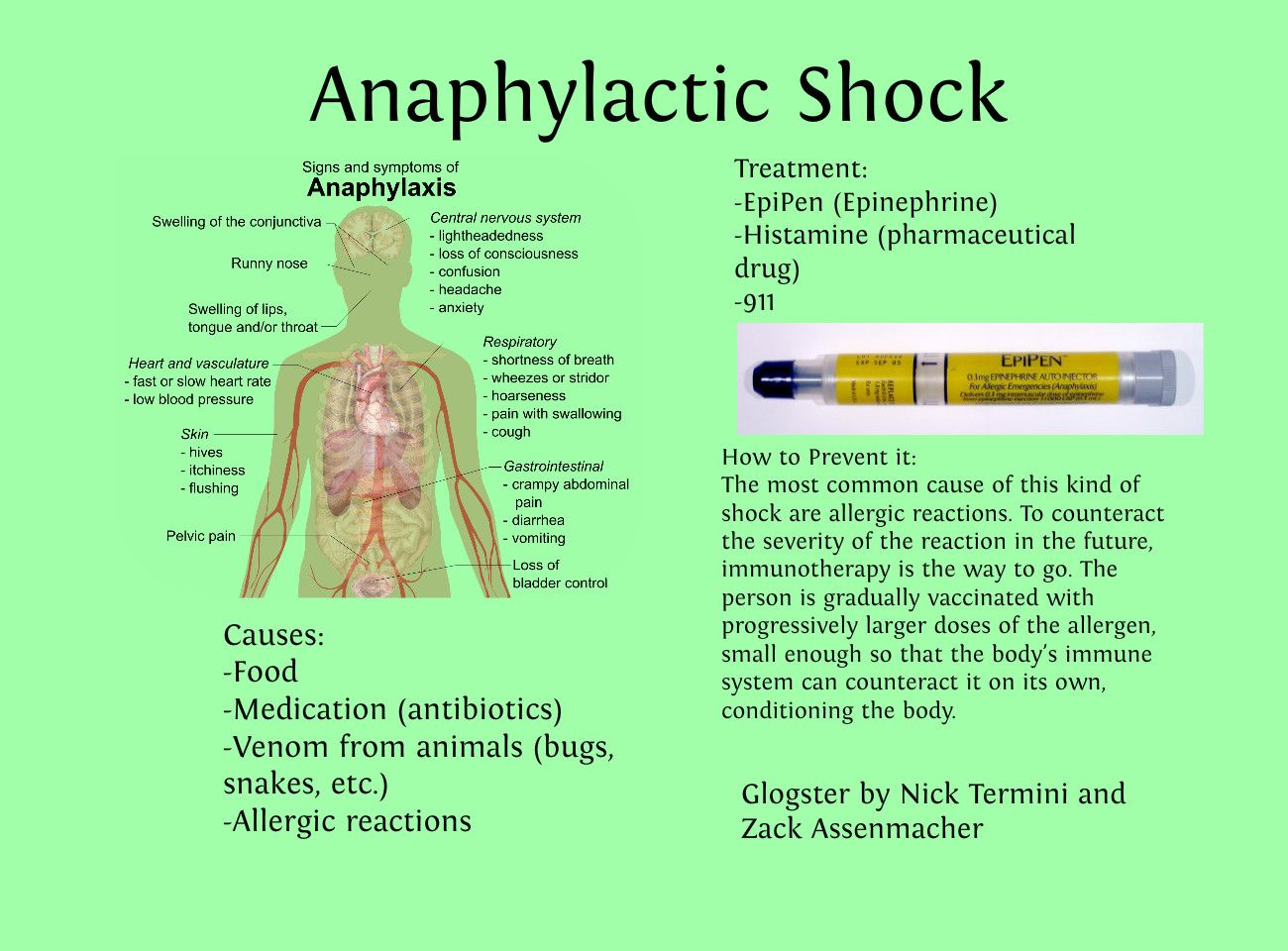 They use a sharp, knife-like proboscis to pierce the skin and reach into the blood vessels for food. Bed bug bites usually leave a red patch or bump on the skin. Bites can cause itching and irritation in humans.
They use a sharp, knife-like proboscis to pierce the skin and reach into the blood vessels for food. Bed bug bites usually leave a red patch or bump on the skin. Bites can cause itching and irritation in humans.
Causes of their appearance in the house
Bed bugs are parasitic insects that feed on human blood. They are unwanted guests in any home and their presence can cause considerable anxiety and discomfort to the occupants.
Many people wonder how bed bugs get into their homes. It is generally accepted that the main reasons for their appearance are:
- Travel and recreation. Bed bugs can travel with you in your luggage or clothing. They can get into your hotel room or hotel room and multiply quickly in soft furnishings.
- Purchase of used furniture. Bed bugs can hide in old mattresses, sofas and other pieces of furniture that were once used. By purchasing such things, you can suddenly bring into the house not only new furniture, but also uninvited “tenants”.

- Movement of neighboring bed bugs. Bed bugs can enter your home through neighbors’ apartments or houses. They can travel through wires, sewers, or through vents, entering your space through floors or cores.
- Purchase of new things. Sometimes, bed bugs can get into your home quite by accident, buying new furniture, clothes, or other items that have already been infested in stores or warehouses.
It is important to note that bed bugs differ from other insects such as ants or cockroaches in that they do not carry infectious diseases. However, bedbug bites can cause allergic reactions and serious psychological discomfort in people, so their appearance requires immediate control.
How do you know if you have bed bugs?
Bed bug bites can be an unpleasant sign of the presence of these parasites in your apartment or house. Knowing the main signs of bites will help you detect the presence of bed bugs in time and take the necessary measures.
When bed bugs bite, they inject their saliva, which contains anticoagulants and anesthetics, into the skin of their victim. This helps them not only feed on blood, but also anesthetizes the bite so that the victim does not notice their presence during the attack itself and cannot drive them away. That is why bed bug bites can leave marks on the skin in the form of spots, swelling and itchy dots.
In addition to bites, other signs of bed bugs may include:
- Presence of rust stains on bedding, mattresses or walls;
- Detection of larvae, shredded skin and bedbug excrement in bed or on furniture;
- Offensive odor, which may resemble rot or tangerines;
- Sensation of crawling or walking on the body during sleep.
If you notice these signs, it is recommended that you contact a professional to examine and confirm the presence of bed bugs. Bedbugs can hide in the most unlikely places, so removing them yourself can be difficult and not effective enough.
Symptoms of bed bug bites
Bed bug bites can result in several characteristic symptoms that may vary from person to person depending on their individual reactions to the stings and the number of stings.
The itching sensation from bed bug bites may start immediately after the bite or appear hours or days later. Itching can be so intense that the person scratches constantly, which can lead to skin damage and the possibility of a secondary infection.
However, not all people notice the presence of bed bug bites on their skin. Some people do not experience any symptoms or even realize that they have been bitten by bed bugs until they discover the following signs: the appearance of blood stains on bedding, the presence of a characteristic odor, or the presence of the bug itself.
Use of special traps
If you find bed bug bites in your home, you need to take measures to destroy these pests. One of the effective methods of controlling bed bugs is the use of special traps.
Traps are special devices that attract and trap bed bugs. They can be of various types, such as glue traps or carbon dioxide traps.
Glue traps are sheets or strips coated with an adhesive. Adhesive surfaces attract bed bugs, which get stuck on them and cannot free themselves. This allows not only to catch pests already present, but also to control the population of bedbugs, preventing their reproduction.
The use of special traps is an additional means of controlling bed bugs. However, it must be remembered that they can only be effective when used correctly and in combination with other bed bug control methods such as chemical treatments and the elimination of possible bed bug feeding and hiding places.
What kind of bites do bed bugs leave?
Bed bug bites have characteristic features that make them easy to distinguish from other insects. They leave red, itchy redness on a person’s skin that can range in size from a few millimeters to several centimeters.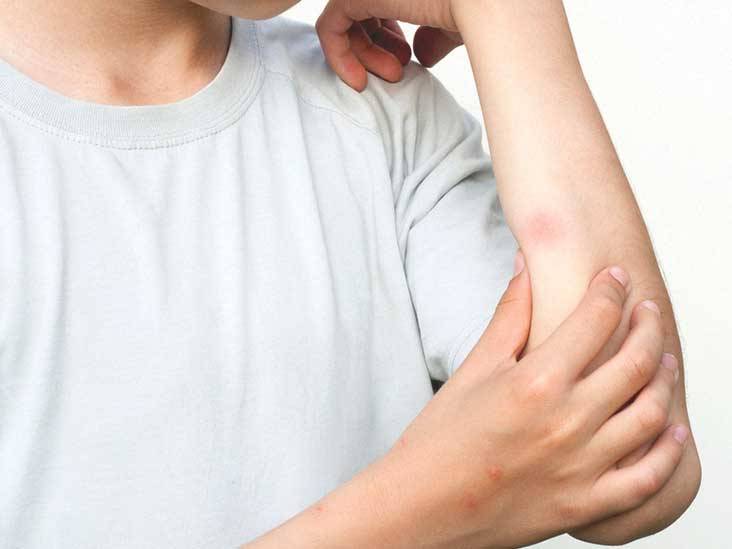
Bed bug bites tend to cluster in small clusters as bed bugs prefer to bite the same spot on the skin multiple times in a row. At the same time, bites leave traces in the form of small red dots surrounded by small edema.
Very often bedbug bites can be found on the skin of the legs, especially on the legs, closer to the ankles and under the knee. Bed bugs prefer to bite in places with thin skin, where it is more easily accessible to capillaries and blood vessels, thus providing an easy blood supply.
However, bedbug bites can be found not only on the legs, they can occur all over the body. Biting areas can include the back, neck, arms, forearms, abdomen, buttocks, chest, and even the face.
Characteristics of skin rashes
Skin rashes caused by bed bug bites have their own characteristic features that can be used to determine the cause of their occurrence.
One of the main signs of a bed bug bite is its clustering. The rash usually forms small patches of redness on the skin, which may be in the form of large spots or small nodules.
A characteristic feature of bedbug bites is also their linear or semicircular arrangement. Bed bugs tend to target specific areas, such as the neck of a mattress or the edges of bed linen, by biting the skin. As a result, rashes on the skin may have unusual shapes, resembling traces after touching the grooves or semicircles.
Another important symptom of bed bug bites is itching. Bed bug bites usually cause intense itching in the victim. The skin around the bites can also be irritated and inflamed.
Sometimes rashes on the skin may be accompanied by the appearance of a bloody substance. This may be the result of minor skin damage during a bed bug bite.
It is important to note that skin rashes can have individual characteristics depending on the reaction of the human body. Some people may have more severe symptoms and more intense itching, while others may have less noticeable symptoms. Therefore, to accurately determine the cause of skin rashes, it is better to seek advice from a dermatologist.
Differences between bedbug and mosquito bites
Bedbug and mosquito bites have different features and manifestations on human skin.
Bed bugs:
- In blood-sucking bugs, the bite usually leaves a red or olive-brown spot, the size of which depends on the individual reaction of the organism;
- Bedbug bites do not usually cause itching or redness at the site of the bite, but the occurrence of a reaction may be individual;
- Bed bug bites usually appear in groups or lines as bed bugs leave several bites in one night;
- Bed bug bites are common on exposed areas of the skin such as the face, neck, arms and legs.
Mosquitoes:
- Mosquito bites usually leave redness on the skin, which may be accompanied by itching. The size and shape of redness may vary;
- The stung area may sometimes look swollen and cause discomfort;
- Single mosquito bite is typical because mosquitoes usually bite only once;
- Mosquito bites prefer soft and thin skin areas such as popliteal fossae, ankles and wrists.

Thus, bedbug and mosquito bites have different manifestations on human skin. It is important to take into account these differences for a correct diagnosis and appropriate measures to control bed bugs and mosquitoes.
What to do if you find bites?
Seeing bed bug bites on a person’s skin can be a sign of a problem. If bites are found, the following measures are recommended:
- Check for bed bugs: If bites are found, bed and furniture should be checked for bed bugs. Their bites usually leave red rings on the skin.
- Gather Evidence: If bites are found, evidence in the form of photographs or video is recommended. This may be necessary to confirm their presence when contacting specialists.
- Clean and launder: If bites are found, bedding and clothing should be cleaned and laundered immediately. This will help remove any bed bugs.
- Contact a specialist: If bites are found and bed bugs are suspected, it is recommended to contact a specialist such as pest control or bed bug extermination.
 They will be able to inspect and suggest appropriate measures to control these pests.
They will be able to inspect and suggest appropriate measures to control these pests. - Precautions to take: To prevent further bites, precautions must be taken, such as regular cleaning, washing of bed linen and clothes, checking new places of residence before moving in.
It is important to remember that the detection of bed bug bites requires immediate action, as they can cause not only physical but also psychological distress. Therefore, regular inspections should be carried out and measures taken to combat bed bugs at the first sign of their presence.
Bite care and infection prevention
After a bed bug bite, it is important to take the necessary steps to care for the skin and prevent possible infections. Be aware that bed bug bites can cause itching, irritation, and redness of the skin.
First, do not rub the bite. This can lead to even more skin irritation. Instead, use mild soap and warm water to clean the area around the bite. Dry your skin thoroughly afterwards.
Dry your skin thoroughly afterwards.
If you have severe itching, you can use antihistamines or anti-itch creams. But consult your doctor for recommendations and consult on their use.
If a crust has formed at the base of the bite, do not peel it off to avoid the possibility of infection in the open wound. The crust will fall off on its own with time. If the bite becomes inflamed, red, or painful, see a doctor.
Do not scratch bites or pop any blisters that may occur. It can also lead to infection. If you think you have an infection, see your doctor. He will prescribe the necessary treatment and help you understand in more detail the causes and consequences of bed bug bites.
We must not forget about prevention. Try to avoid contact with bed bugs. As you travel, evaluate your accommodation and check mattresses, beds, and furniture. If you still find bedbugs or their traces at home, contact the specialists for pest control.
Also regularly clean your home and inspect mattresses and beds for signs of bed bugs.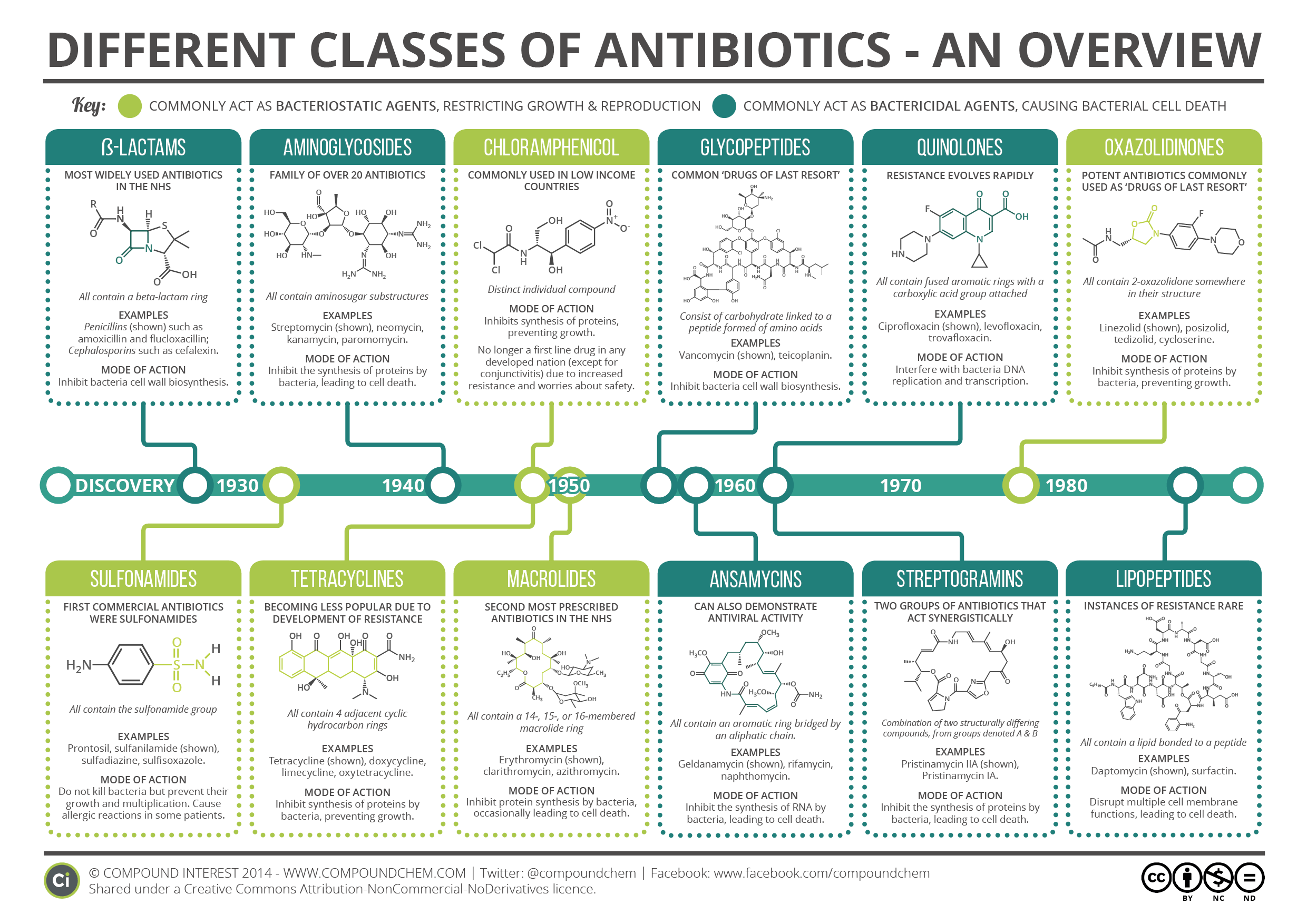 If you are traveling, try not to place your bag on the bed or the floor and prefer to use dedicated luggage covers.
If you are traveling, try not to place your bag on the bed or the floor and prefer to use dedicated luggage covers.
How to avoid being bitten by bed bugs?
Bed bug bites can cause discomfort and health problems. However, there are several ways to help avoid their appearance and protect yourself from these annoying insects.
- Keep your home clean at all times, especially the bedroom. Clean regularly, vacuum carpets and mattresses, and wipe down surfaces and linens.
- Remove all possible places where bedbugs can hide – cracks, crevices, voids in furniture. Seal all cracks in walls and floors.
- Avoid buying used furniture and mattresses. If you still buy a similar thing, carefully inspect it for the presence of bedbugs and their eggs.
- Take good care of your hygiene while traveling. Inspect beds and furniture in hotels and hostels before use.
- Use protective covers on the mattress and pillows. Such covers not only protect against bites, but also help protect the mattress from damage and dirt.

- Treat your bedroom regularly with insect repellants. This will help prevent the appearance and reproduction of bedbugs and other pests.
By following these simple guidelines, you can reduce your risk of bed bug bites and keep your sleep healthy and comfortable.
Tips for Prevention and Prevention
1. Clean your apartment or house regularly:
- Sweep floors and surfaces, especially in corners and behind furniture where bed bugs can hide.
- Wash bed linen and clothes at a high temperature to kill possible eggs and insects.
- Remove wallpaper and other potential hiding places for bed bugs.
2. Check new places you stay:
- Inspect mattresses, pillows and bedding in hotels and inns before checking into a room.
- If you notice any signs of bed bugs, notify the property and request a change of room.
- Be especially careful when renting apartments or houses for vacations or business trips.

3. Avoid used furniture and items:
- Purchase new furniture to make sure it is insect-free.
- Do not take home used mattresses, couches, sofas, or other items that may be infested with bed bugs.
4. Seal cracks and crevices:
- Seal all crevices, slots and crevices where insects may be hiding with silicone sealant or other suitable material.
- This can help prevent bed bugs from entering your home or apartment.
5. Perform regular inspections:
- Examine the surfaces of mattresses, beds and other furniture, especially near bedding.
- Look for blood stains, excrement or most bed bugs.
- If you notice anything suspicious, take immediate action to correct the problem.
6. Contact the professionals:
- If you have a problem with bed bugs, it is best to call a professional for professional treatment.

- This will help to completely get rid of bedbugs and prevent their reappearance.
Related videos:
Q&A:
What do bed bug bites look like on human skin?
Bed bug bites on human skin may appear as red, swollen areas with intense itching. Bites are usually grouped and arranged in a line or spot. Perhaps the appearance of small bruises, irritation and redness of the skin. Bed bug bites do not usually cause noticeable pain, but they can lead to severe itching and discomfort.
How are bed bug bites different from mosquito or other insect bites?
Bed bug bites, unlike mosquito or other insect bites, tend to be closer together and form a line or spot. They also have a certain order and can be grouped. In addition, bed bug bites usually do not cause severe pain, but can lead to severe itching and discomfort.
Can bed bug bites cause serious health effects?
Bed bug bites are not usually a serious health hazard, but they can cause severe itching and discomfort. Repeated bites can lead to skin irritation and possible infection. Some people may experience allergic reactions or dermatitis. If you experience unusual or prolonged symptoms after being bitten by bed bugs, it is recommended that you contact your doctor for advice.
How can bed bug bites be treated?
Bed bug bites can be treated in a variety of ways. First, clean the bitten area with warm water and soap to prevent infection. Antihistamine creams or lotions can then be used to relieve itching and irritation. Topical antipruritics such as gel patches or sprays can also be used. If the bites cause severe discomfort or do not go away within a few days, it is recommended to see a doctor.
Allergy to bedbug bites: symptoms and treatment
Allergy to bedbug bites
Last update: 11/21/2022
Bed bugs are blood-sucking insects that are active at night. Bed bug bites can cause a lot of trouble to a person: they not only cause severe itching and swelling of the skin, but also do not look at all aesthetically pleasing. Bed bug bites can also interfere with sleep patterns, leading to nervousness and irritability. In people who are prone to an atypical reaction of the immune system to the bites of other insects, cases of allergy to bed bug bites are common.
Bed bug bites can cause a lot of trouble to a person: they not only cause severe itching and swelling of the skin, but also do not look at all aesthetically pleasing. Bed bug bites can also interfere with sleep patterns, leading to nervousness and irritability. In people who are prone to an atypical reaction of the immune system to the bites of other insects, cases of allergy to bed bug bites are common.
What are the causes of bedbug allergy?
Allergy to bed bug bites belongs to the category of so-called insect reactions – that is, manifested in response to an insect bite. Predisposition to this kind of reactions is living in places with unfavorable ecology, deviations in the immune system, general depletion of the body, as well as heredity.
Bedbugs have a special piercing-sucking organ, presented in the form of a proboscis. During a bite, the bug pierces the top layer of the skin with it to get to the capillary. Usually a person does not feel a bug bite, as the insect injects saliva into the wound – it contains a special anesthetic substance, the effect of which lasts about 10-15 minutes. After this time, the puncture site begins to itch and itch, but by this time the bug is already crawling away.
After this time, the puncture site begins to itch and itch, but by this time the bug is already crawling away.
The reason for the appearance of an allergy to bed bug bites is the sensitivity of the body to the anesthetic substance found in the saliva of the insect. This is a fairly strong allergen: according to statistics, its intolerance occurs in 80% of the world’s population. Interestingly, the cause of signs of allergy to bedbugs is not only their bites, but also waste products – particles of chitinous shell and excrement.
Symptoms of bedbug bites
Bed bug bites can be confused with other insect attacks, as well as diseases such as dermatitis or chickenpox. However, there are some distinguishing features that make it easy to distinguish bedbug bite marks from skin rashes or bites from other insects. These include the following:
- Bed bug bites usually form a chain, island or path. The distance between them is about 3-5 cm. Such a strict arrangement of bites is easy to explain: while searching for a suitable vessel, the insect makes several punctures, crawling to the side for a short distance.
 Such a series of bites allows the bug to get enough for several days, as it sucks up to 7 microliters of blood. This amount is not enough for the bitten person to feel unwell caused by blood loss. However, there are cases of constant and multiple bites by bedbugs of small children, as a result of which iron deficiency anemia develops in babies.
Such a series of bites allows the bug to get enough for several days, as it sucks up to 7 microliters of blood. This amount is not enough for the bitten person to feel unwell caused by blood loss. However, there are cases of constant and multiple bites by bedbugs of small children, as a result of which iron deficiency anemia develops in babies. - Bed bug bites itch and itch a lot. But unlike traces of flea or mosquito attacks, the itching from bedbug bites passes quickly enough. If you do not comb the bitten places, they stop itching within one day.
- One of the signs of bedbug bites is a rounded swelling, on top of which there is a bump with a small red dot in the center. During the day, the redness disappears, and the point from the bite of the bug turns black.
- Skin around bed bug bites is swollen and red. Perhaps a local increase in temperature in places of bites (especially if there are a lot of them).
If a person is allergic to bedbug bites, more serious symptoms can join the above symptoms – a general increase in body temperature, headache, itching that does not stop for more than a day, cough, nasal congestion, sneezing, and Quincke’s edema.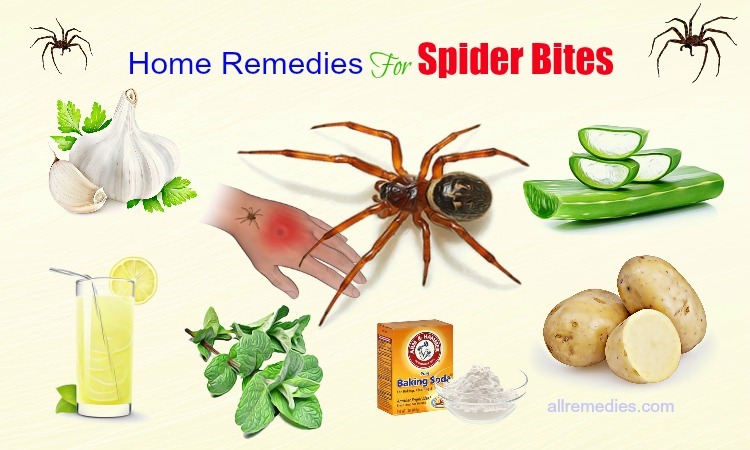 If there is a strong intolerance to bedbug bites, loss of consciousness and anaphylactic shock may occur. And if you can consult a doctor with itching and other non-dangerous signs of allergy to bedbug bites the next day after they appear, then if you experience dizziness, loss of consciousness or shortness of breath, you should call an ambulance as soon as possible!
If there is a strong intolerance to bedbug bites, loss of consciousness and anaphylactic shock may occur. And if you can consult a doctor with itching and other non-dangerous signs of allergy to bedbug bites the next day after they appear, then if you experience dizziness, loss of consciousness or shortness of breath, you should call an ambulance as soon as possible!
Bed bug allergy treatment
The appointment of therapy should be handled by a doctor, so it is recommended to sign up for an appointment with an allergist or dermatologist as soon as possible. If the allergic reaction is not too pronounced, treatment may be limited to taking antihistamines. In cases where there is severe itching that interferes with normal life, the doctor may additionally prescribe sedatives. In the presence of pronounced skin manifestations, local preparations are prescribed – ointments, gels or creams of a hormonal or non-hormonal nature.
Folk remedies for bedbug bites
In addition to traditional medicines, traditional medicine recipes can be used for itching from a bug bite. Below is a list of fairly effective remedies that will help in eliminating unpleasant symptoms:
Below is a list of fairly effective remedies that will help in eliminating unpleasant symptoms:
• Mint leaves. Peppermint has cooling properties that are good for itching. It is recommended to wash fresh leaves, grind them and apply to bite sites, wrapped in clean gauze or bandage.
• Onion juice. To relieve itching from bedbug bites, you can cut the head of an onion and attach it to the site of the cut to the swelling.
• Baking soda. It is necessary to dilute half a teaspoon of soda in a glass of warm water, stir and lubricate the bedbug bites with the resulting solution using a cotton pad.
• Plantain. Rinse and grind plantain leaves, then apply to itchy bites.
• A sequence. A decoction of a string has excellent antipruritic properties. To prepare it, you need to pour three tablespoons of grass with a glass of boiling water and leave for a quarter of an hour, then strain and wipe the bedbug bites. Also, the resulting infusion can be added to baths.
• Toothpaste. If the bite of a home bug is very itchy, and there are no other remedies at hand, you can lubricate it with a small amount of toothpaste. The extracts of menthol or eucalyptus included in its composition will help to forget about itching for a while.
• Cabbage. It is recommended to separate a fresh cabbage leaf from the head of cabbage and attach it to the site of the bed bug bite.
• Essential oils. Tea tree and lavender oils have drying, antiseptic properties, so they can be used to treat insect bites.
Allergy to bedbug bites in a child
Bed bug bites mostly affect women and children. This is due to the fact that women’s and children’s skin is thinner, smoother and more delicate, and blood vessels are located close to its surface. In addition, the male body has a more pronounced smell.
The appearance of an allergy to bed bug bites in children is due to a weak immune system, as well as the presence of a hereditary predisposition. If one of the parents or close relatives of the baby has a tendency to insect allergies, the chances that it will be inherited are very high.
If one of the parents or close relatives of the baby has a tendency to insect allergies, the chances that it will be inherited are very high.
How to get rid of bedbug bites?
Of course, getting rid of bedbug bites is very important. But in order for insects not to torment you every night, you must first get rid of their presence in an apartment or house.
- To do this, you need to buy a suitable product and process sleeping places – beds, sofas, and armchairs.
- It is recommended to beat the mattress well or take it to a dry cleaner and change bed linen in a timely manner.
- It is believed that bed bugs have a harder time climbing metal and polished surfaces, so it is advisable to sleep on beds made of smooth materials.
- If at the moment it is not possible to completely remove the bedbugs, you can try to scare them away. To do this, you need to lay out herbs with a pungent smell under the bed – it can be wormwood, lavender.

Consequences of bedbug bites
Even if you do not have an allergy after being bitten by bedbugs, severe itching on the first day can cause you a lot of inconvenience. One of the undesirable consequences of bedbug bites is combing the bumps with dirty hands, which can lead to infection entering the wound. Infection of combed bed bug bites can lead to suppuration and inflammation, so combing the swelling is not recommended.
By themselves, the bites of domestic bugs are not dangerous – of course, if there is no hypersensitivity to them. However, the feeling that insects are crawling on bed linen and on the human body at night is not the most pleasant. It can lead to sleep disorders and disruption of rest, and this is fraught with lack of sleep and irritability during the day.
In addition, bedbug bite marks can be very embarrassing for a person, interfering with his daily life, communication, work or study. Multiple redness and black dots, grouped in open areas of the body, cause a bitten person to be ashamed to appear in crowded places.
Many people are especially afraid of bedbug bites for another reason – the possibility of contracting viral diseases, among which HIV and hepatitis occupy a special place. However, with regard to bedbugs, this fear is unfounded. Even if the bug bites an infected carrier, the virus will lose its ability, as it mixes with the saliva of the insect. Another argument in favor of the impossibility of contracting viral diseases through a bug bite is as follows. The proboscis of the insect has two channels that do not communicate with each other: through one of them, an anesthetic substance enters the place of bite with saliva, and through the second the bug sucks in blood. Since these channels are not connected, infection by a bug bite cannot occur.
Do La Cree products help with bed bug bites?
As mentioned above, the appointment of treatment for bedbug bites should be handled by a doctor. However, you can supplement the therapy recommended by him with the use of pharmacy cosmetics. Regenerating cream “La Cree” has proven to be an effective remedy in the fight against itching and redness of the skin caused by bedbug bites. It contains no hormones, so the cream can be used for a long period of time. Since the restoring cream “La Cree” does not contain parabens and fragrances, it can be used by children, pregnant women and people prone to allergies.
Regenerating cream “La Cree” has proven to be an effective remedy in the fight against itching and redness of the skin caused by bedbug bites. It contains no hormones, so the cream can be used for a long period of time. Since the restoring cream “La Cree” does not contain parabens and fragrances, it can be used by children, pregnant women and people prone to allergies.
Expert opinion
According to the results of numerous clinical studies, La Cree products, including a cream for sensitive skin, are recommended by the St. Petersburg branch of the Union of Pediatricians of Russia.
Efficacy, safety and tolerability of products has been proven by a clinical study. The cream is also suitable for daily skin care of a child with mild and moderate atopic dermatitis and during remission, accompanied by a decrease in the quality of life of patients. As a result of therapy, a decrease in the activity of the inflammatory process, a decrease in dryness, itching and flaking were noted.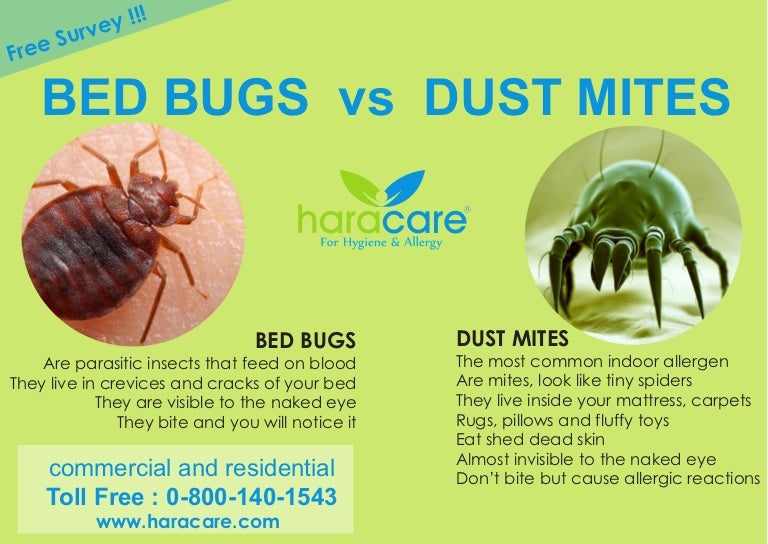
La Cree cream for sensitive skin has been clinically proven to:
- reduces itching and irritation;
- relieves skin redness;
- moisturizes and gently cares for the skin.
Sources:
- Sukolin Gennady Ivanovich, Illustrated Clinical Dermatology. Brief alphabetical guide, publishing house Lux Print, 2010
- Chapman M. Shane, Habif Thomas P., Zug Catherine A., Dinulos James G. H., Campbell James L., Dermatology. Handbook of differential diagnosis, publishing house: MEDpress-inform, 2014
- Mancini Anthony J., Crouchuk Daniel P., Pediatric dermatology. Handbook, publishing house: Practical Medicine, 2018
Allergy photos
Allergy on the child’s body
Photograph of a skin allergy in a child
Allergy in the legs
Allergy to the pope in a child
Allergy photo on the face
Allergy on the hands
Allergic edema on the face of a child
Photo album on the disease
See also
Dust Mite Allergy
Many people mistakenly believe they are allergic to house dust.






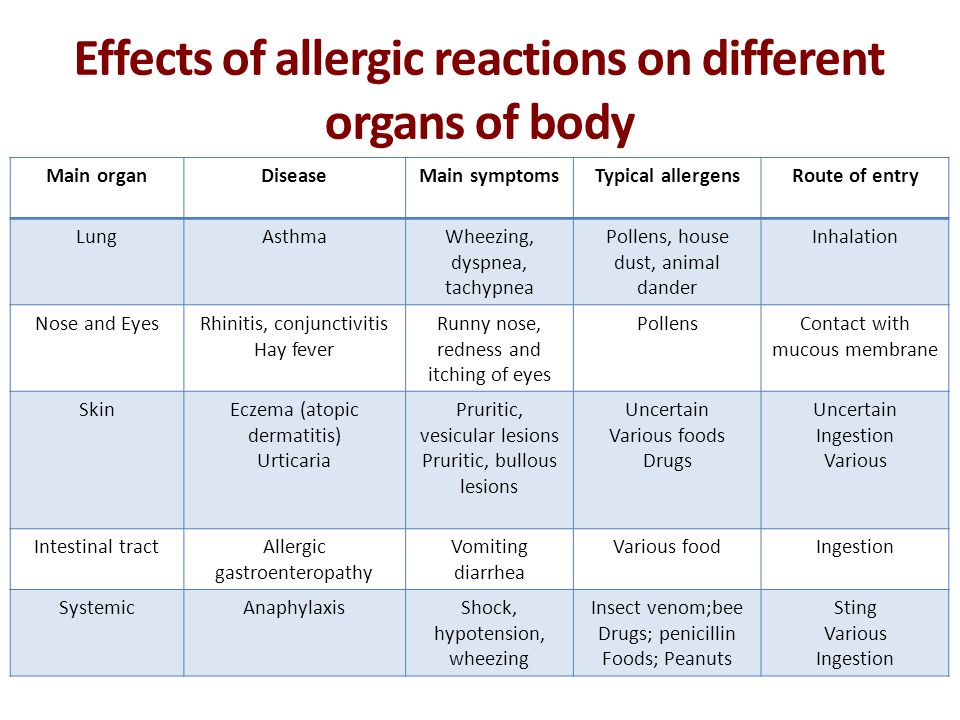
 13 Related videos:
13 Related videos:

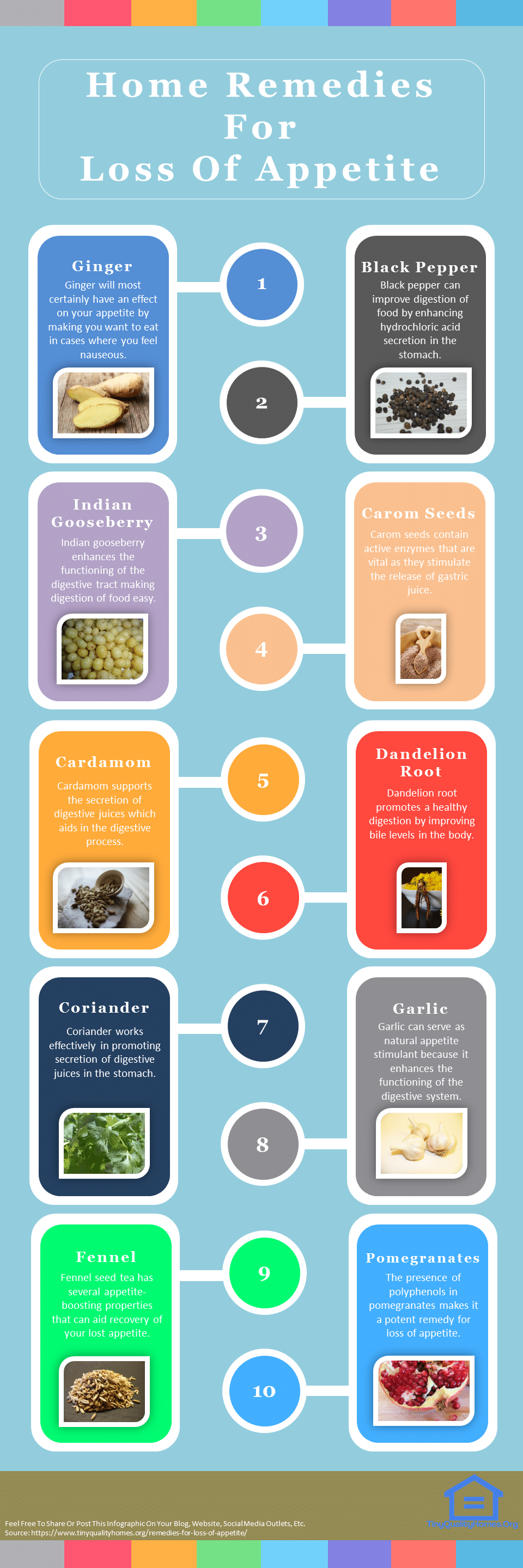 They will be able to inspect and suggest appropriate measures to control these pests.
They will be able to inspect and suggest appropriate measures to control these pests.


 Such a series of bites allows the bug to get enough for several days, as it sucks up to 7 microliters of blood. This amount is not enough for the bitten person to feel unwell caused by blood loss. However, there are cases of constant and multiple bites by bedbugs of small children, as a result of which iron deficiency anemia develops in babies.
Such a series of bites allows the bug to get enough for several days, as it sucks up to 7 microliters of blood. This amount is not enough for the bitten person to feel unwell caused by blood loss. However, there are cases of constant and multiple bites by bedbugs of small children, as a result of which iron deficiency anemia develops in babies.